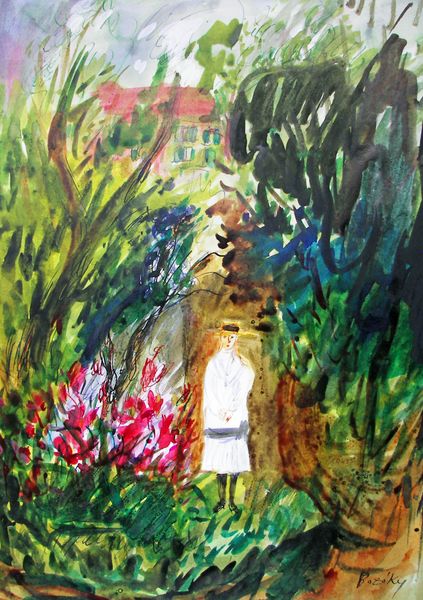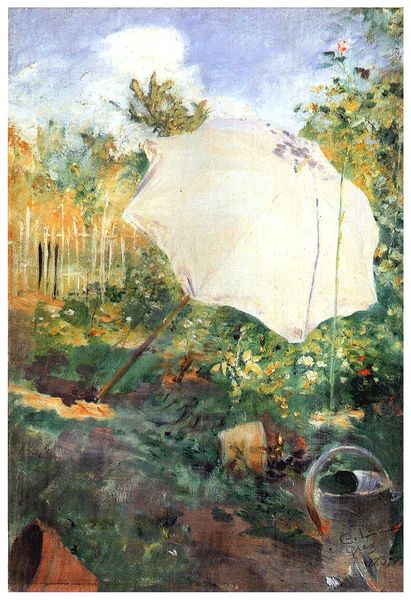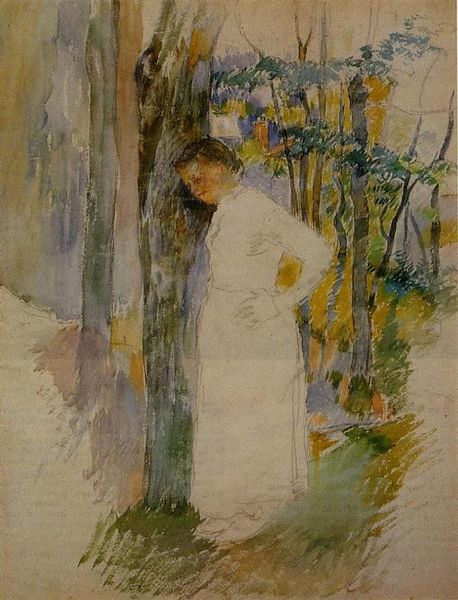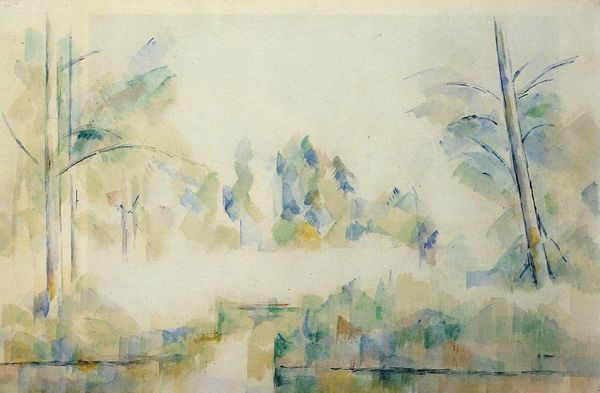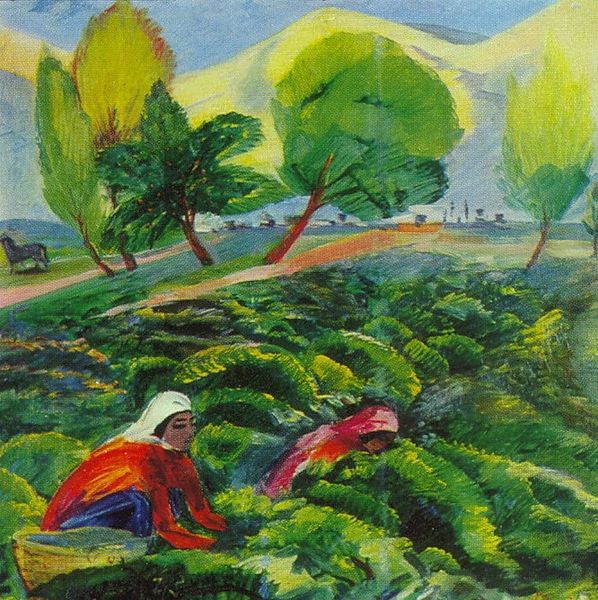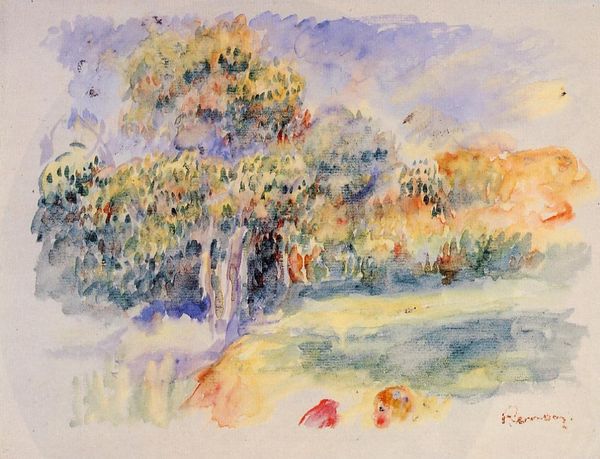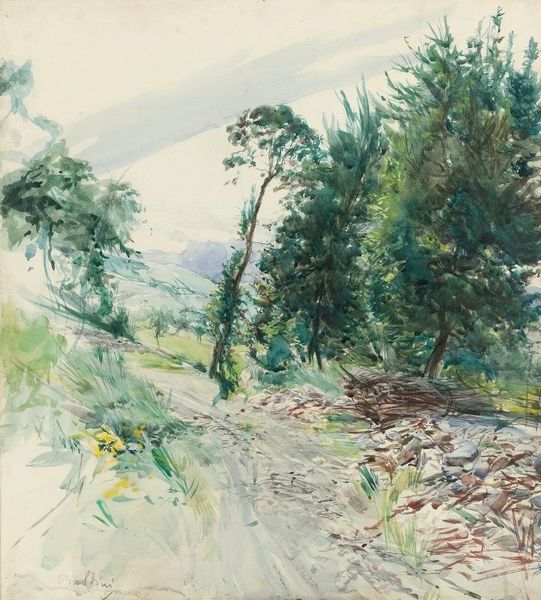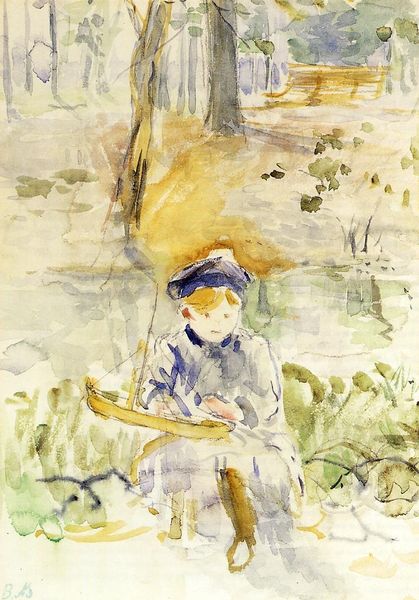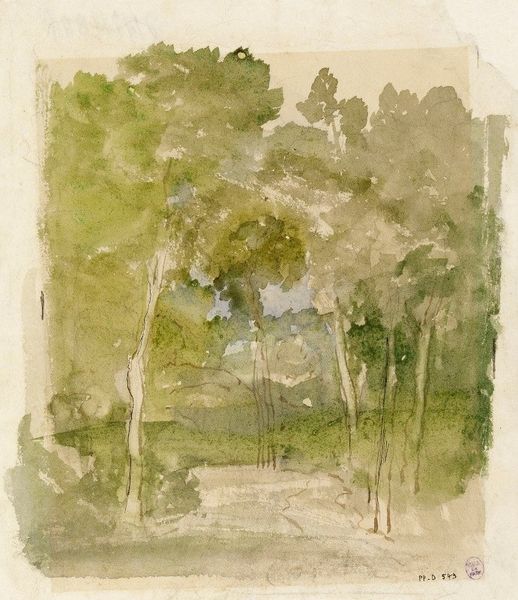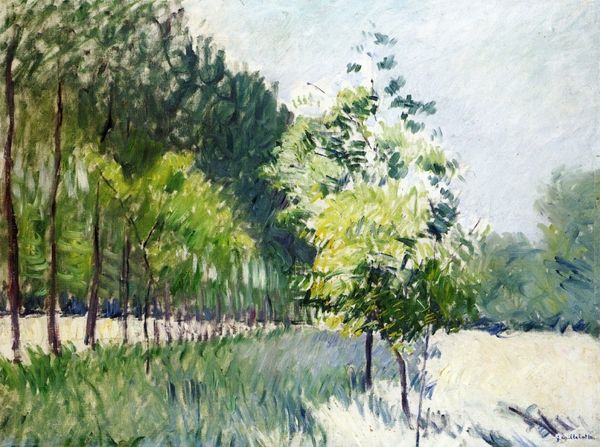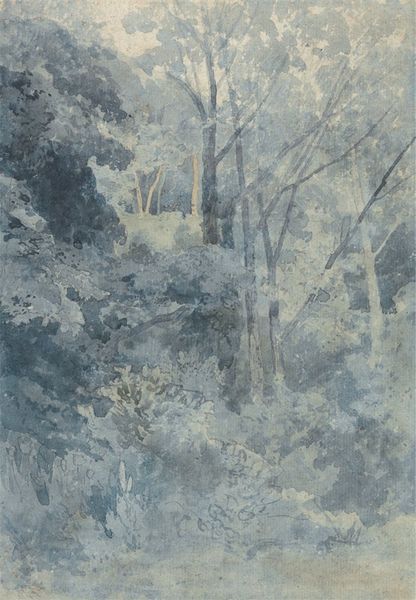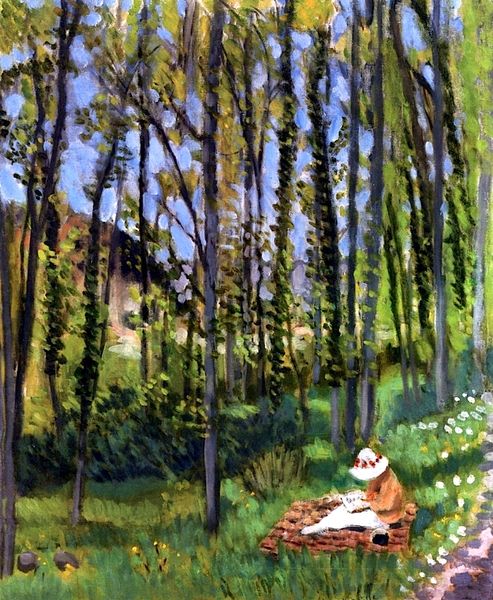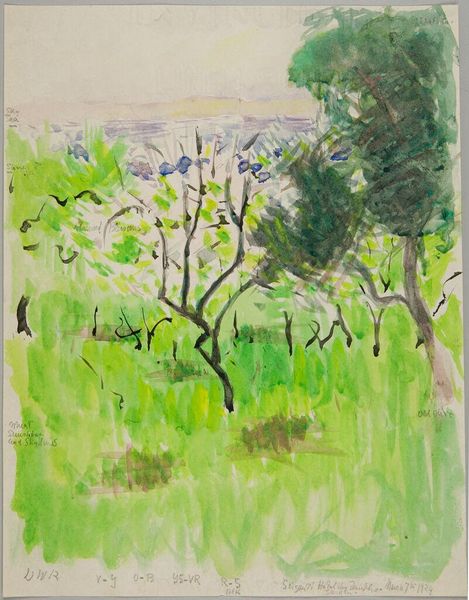
watercolor
#
tree
#
impressionism
#
landscape
#
impressionist landscape
#
figuration
#
watercolor
#
watercolour illustration
#
watercolor
Copyright: Public domain
Curator: There's a shimmering quality to this piece—a watercolor by Mildred Anne Butler entitled *A Woman Sketching in a Glade*. What strikes you initially about it? Editor: It evokes a certain nostalgic peace, like stepping into a memory of a gentler time. The washes of color are so fluid, it's almost dreamlike. But I also sense a subtle statement about female creativity and independence of mind at this time, a woman alone immersed in nature with her practice. Curator: Precisely. The woman sketching, likely the artist herself, acts as a vessel to an exploration of consciousness through creativity, echoing the romantic ideal of finding profound spiritual insight in nature. The impressionistic style captures light in a fleeting and sensorial way. Editor: Yet, I find myself considering the limitations and expectations imposed upon women artists in Butler’s era. Painting 'en plein air' became a social activity, not an act of social resistance as a political expression or a public stance, an acceptable past-time to explore a personal connection to nature. What symbols do you detect in the composition itself? Curator: I see the parasol held above her as a double-edged sword. It shields from the sun, of course, but it also symbolizes a boundary between the figure and the wild, the civilized and the untamed. Think about the 'hortus conclusus', an archetypal enclosed garden, that emphasizes inward focus but equally limits engagement with the external world. Editor: Absolutely, and even the choice of watercolor carries meaning. Compared to the bolder, more traditionally masculine medium of oil, watercolour was considered ‘suitable’ for women artists and hobbyists, often pigeon-holing its practitioner into that specific visual and social aesthetic of quiet contemplation rather than making revolutionary visual statements. Is it possible she might have adopted watercolor out of choice rather than convention? Curator: The medium itself became her voice and signature: a form of quiet rebellion perhaps? What might appear aesthetically pleasing can reveal deep seated and subtle meanings, I appreciate your ability to view the figure as acting as an active agent rather than passive object of desire, as one is inclined when assessing artworks of this type. It invites deeper consideration beyond conventional assumptions. Editor: Viewing it through a contemporary lens certainly makes the quiet of the image more resounding. Thank you for highlighting this dialogue about self expression!
Comments
No comments
Be the first to comment and join the conversation on the ultimate creative platform.
